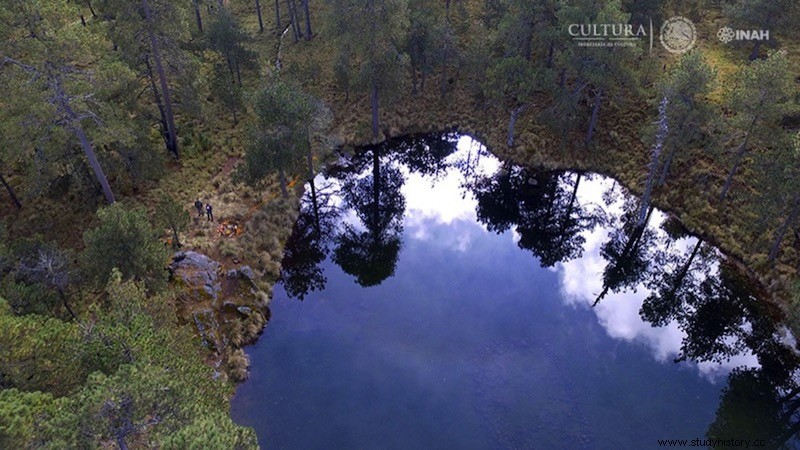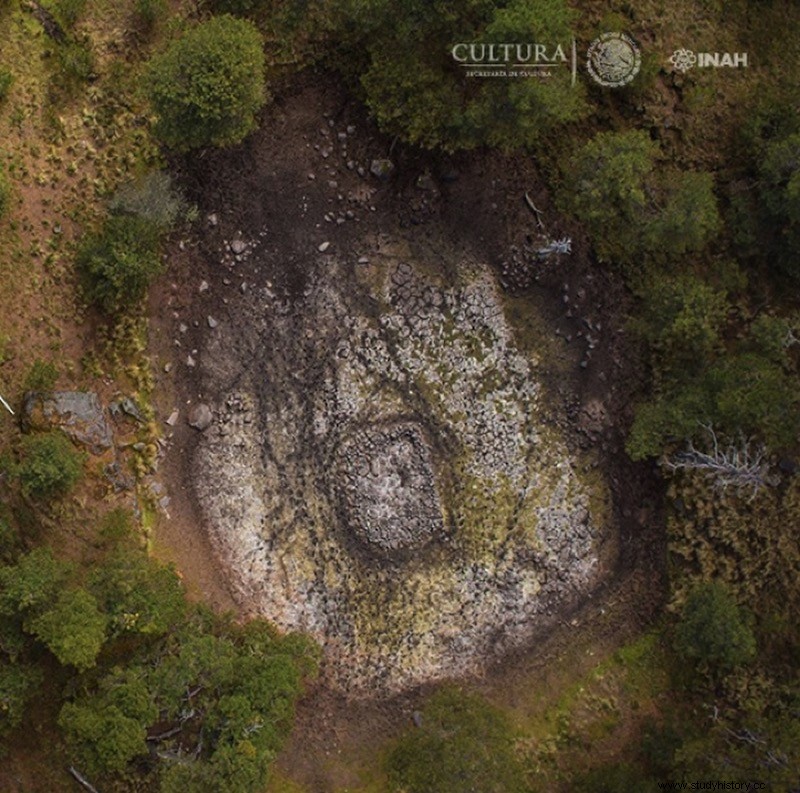Archaeologists from the National Institute of Anthropology and History of Mexico (INAH) discovered a few days ago a structure in the Nahualac Pond, at the foot of the Iztaccihuatl volcano.
It would be a tetzacualco or stone altar located in the middle of the pond, visible when the water level drops, and which produces an optical effect, making it seem that the structure emanates from the water in a similar way to the myth of Cipactli. This stone monster, according to some Mesoamerican legends about the creation of the world, floated on the primeval waters, and heaven and earth would have been created from its body.
Located in the municipality of Amecameca at 3,870 meters above sea level, the Nahualac archaeological site consists of two areas. The first is the pond, where about 1,000 years ago the aforementioned rectangular temple was built of stacked stones without any type of cement known as Tetzacualco (11.5 by 9.8 meters) , according to Rocío Hernández Bautista, INAH archaeologist responsible for the investigation.

The second area is located about 150 meters southeast of the structure, in a valley with abundant springs, where ceramic pieces decorated with motifs associated with Tlaloc, the rain deity, have been found.
The arrangement of the stones in the pond, as if they were floating, makes archaeologists think that it could represent a model of the Universe in miniature. Moreover, the water level would have been regulated by means of pipes to produce an optical mirror effect, simulating that the entire structure floats on the water, representing the mythical beginning of time and space.

The place was already known at least since the 16th century by professional and amateur researchers. In the 19th century, the French explorer Desiré Charnay visited the site, and in 1957 the archaeologist José Luis Lorenzo described it in detail, dating it to the Toltec period (9th-13th centuries) and drawing a plan of the structure. In 1986 Stanislaw Iwanizewski recovered a significant number of ceramic pieces in the area, attributing them to the Mazapa tradition (850 to 900 AD).

The archaeologist Rocío Hernández believes that, according to the reports of the first explorations and the current investigations, it can be deduced that Nahualac is a place of worship to Tláloc, which is also related to the feminine entities of water and earth. In the same way, it would be linked to the ritual meanings of the mirror and the Mesoamerican quincunx, that is, the representation of the four directions of the universe, whose center manifests the meeting point between the cosmic planes .
